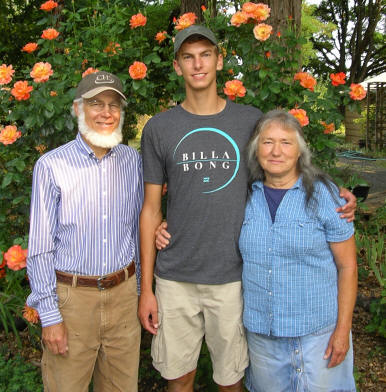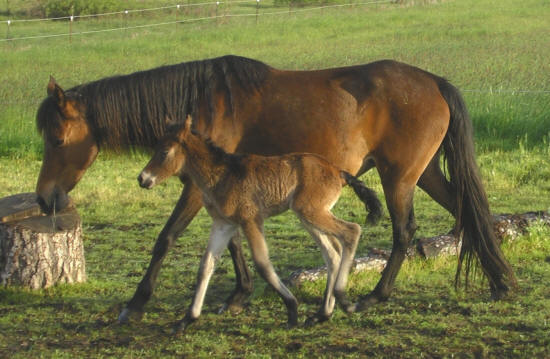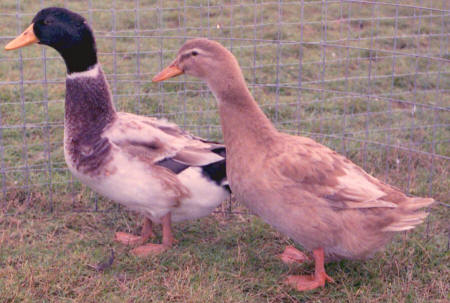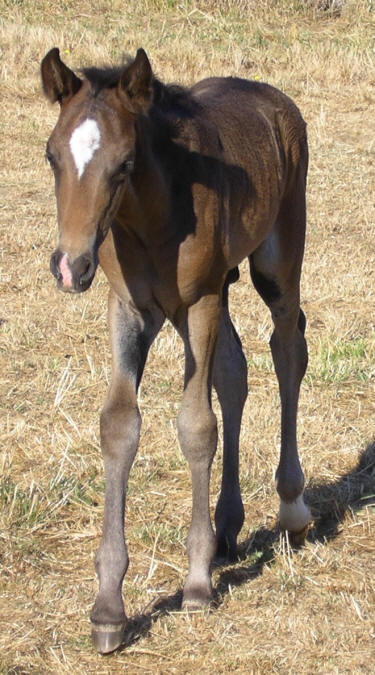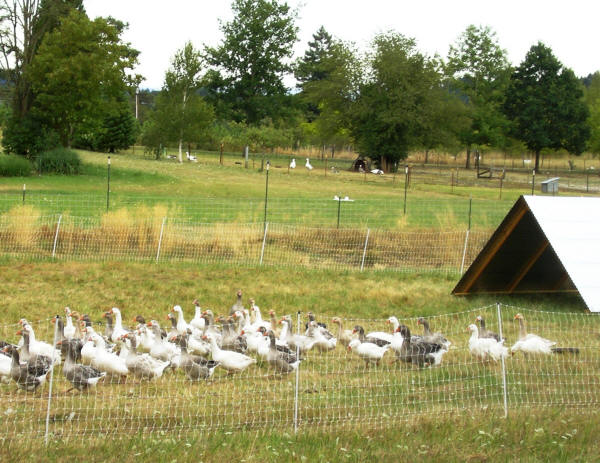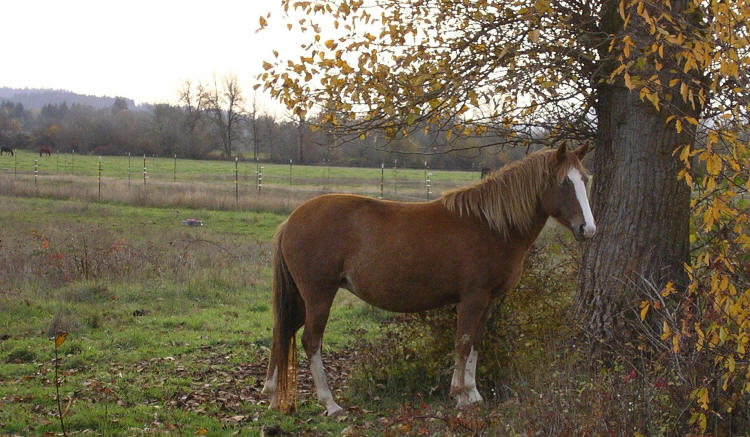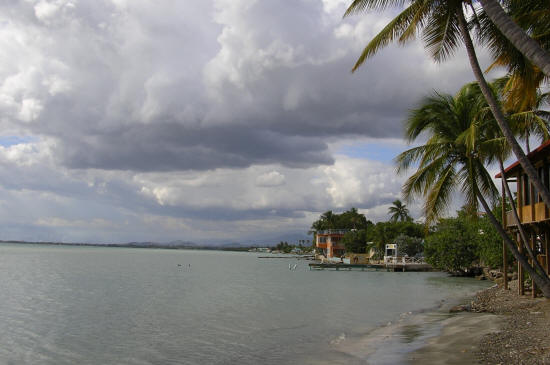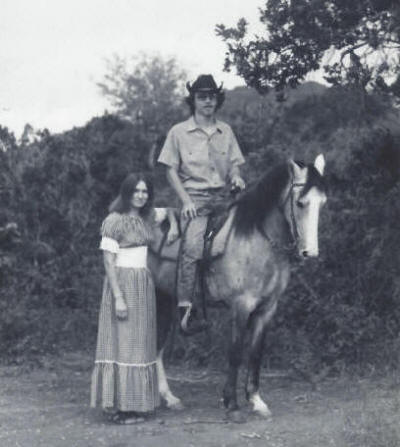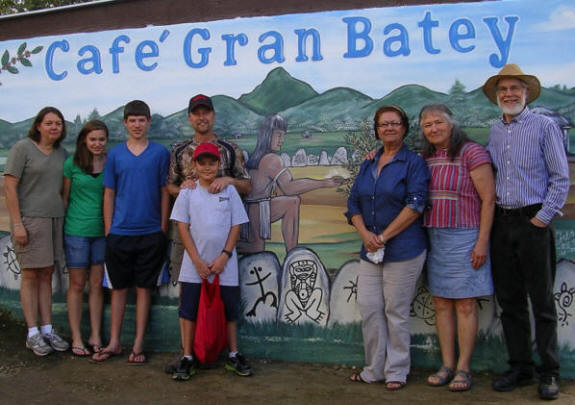February 2023--Another update is long overdue! We continue working with the following duck and goose breeds: Golden Cascade & Hook Bill ducks, and Brown & Buff Africans, Amercian Blues & Lavender Ice and Oregon Mini Geese. We are offering stock as adult birds only (we are not selling/shipping hatchlings). If you want to get in line for adults that are available Fall 2023/Winter 2024, you can email us duckgoosefarm@gmail.com for information. If the birds need to be shipped, we recommend sending your mailing us so we can give you an idea of shipping costs. You can also call (541) 929-5338. We are often outside working on various projects so do not be surprised if we do not answer/respond immediately! (Wanita)
September 2021--Finally, an update! Although the website is not fully updated, the process has begun at last. We have been down-sizing significantly and have sold out of most of the breeds of ducks and geese that we have worked with all these years. At this point we are still working with the following breeds: Golden Cascade & Hook Bill ducks; Brown & Buff Africans, Amercian Blues & Lavender Ice and Oregon Mini Geese. Birds are available as adults. If you want more information on availability, email us duckgoosegarm@gmail.com or call (541) 929-5338. Keep in mind that we are a working farm and as such are often outside working. (Wanita)
April 2020--We are nearly sold out of all ducklings and goslings, so those of you still wanting to get ducks and geese may want to consider getting adults. If you want an idea of shipping costs, email your mailing address and request a quote. If you want to get in line, send in your order/request and include a minimum deposit of $10/bird requested to hold your place in line.
ALSO: Next Sell-out: The decision has been made to sell all of the Silkie Ducks, so now is the time to be getting in line for them if you're interested. We also expect to have adults available in all the other breeds of ducks and geese that we are currently working with. (Wanita)
January 2020--As you can see if you've already visited our Duckling and Gosling Price Lists pages, there are some major changes happening here at HWF&PC. Our flocks of Embdens and Buff Africans either have been or are in the process of being sold to other breeders. It was not an easy decision for Dave who has spent decades working with these gorgeous geese. If you'd like information regarding where you can get "our" Embdens and/or Buff Africans, an email is the easiest way to get that information.
Also, The 2020 hatching season is expected to be our last year for shipping hatchlings. If you are interested in purchasing adult birds, this is a good year to get in line for adult birds that will be available Fall 2020/Winter 2021. Contact us for any questions regarding shipping costs and/or how to get in line. (Wanita)
February 2019--A few quick notes: Hatchling Shipping Page has been updated as of 2/6. Shetlands have all been sold and Toulouse have all been reserved/sold. Email if you'd like information regarding possible sources of Shetlands or Toulouse. (Wanita)
January 2019--The Duckling Price List and the Gosling Price List pages have been updated to reflect our 2019 prices and availability. The Hatchling Shipping Prices have not been updated yet--a rate change is expected soon. The online catalog has not been updated yet to reflect any of these changes. For those of you who are interested in our Dewlap Toulouse and/or Shetlands--we are down-sizing and all of our Shetland breeders have been reserved/sold and we are in the process of selling all of our Toulouse breeders as well. You can email or call with questions. (Wanita)
January 2017--2017 Prices Info Our prices for 2017 remain essentially unchanged, so the 2016 catalog is still useful! Just add $1.00 for shipping rate increases. In addition to the breeds listed in the 2016 catalog, we are also making Shetland goslings available @ $145/pair. The online version of our 2017 catalog has been updated to reflect postage increases (and corrections).
Please note that our hatching season is shorter--and is currently scheduled to begin in early April and end about mid-May. As you may have noticed, we still have a few adults available in Australian Spotted and Mini Appleyards, which are both breeds we are discontinuing as part of down-sizing.
An addition to what we have been offering: Dave is available for consultation at $75/hour. If you are interested in taking advantage of his wealth of experience and expertise, email or call to schedule your consultation. (Wanita)
September 2015--Update on Breeds Available During the long, strenuous days of the 2015 hatching & day-old shipping season, we were forced to acknowledge that we do not have as much energy as we had in our younger years. We have made the difficult decision to make a major reduction in the number of breeds we are going to continue breeding here at the Waterfowl Preservation Center. Because we maintain multiple strains and matings in each variety of waterfowl we breed, each breed/variety that we discontinue will help reduce the amount of chores and record keeping required.
Many of the breeds we have been diligently working with for 25 to more than 50 years. Our hope is that some of you who are dedicated preservation breeders will continue to perpetuate these high-quality strains.
We are offering for sale all of our stock in the following breeds, with the number of years we have worked with them in parentheses: Cayugas (42 years), Runners (51 years), Miniature Silver Appleyards (24 years), Australian Spotted (28 years), Miniature Overbergs (15 years), and most varieties of Calls (40 years).
Mature stock of other breeds (that we are continuing to breed) that are also available this fall:
--in ducks: Saxony, Silver Appleyard (large), Golden Cascade, Welsh Harlequin, Dutch Hook Bill, and Silkies;
--in geese: Oregon Minis, Shetlands (we will only be selling Shetlands as adults from now on), Buff Africans, Brown Africans and White Embdens.
Other Breeds Discontinued: Earlier this year when our nephew, Christopher Green, moved to Montana, he took with him all the East Indies and most of the Calls. For years, Christopher helped Uncle Dave with many of the farm chores, and eventually took over primary responsibility for the East Indies and most of the Calls here. In May, he moved to Montana. To see more of what he and his business partner, Beau McLean have available, visit their website: Duck Creek Farms. They will also be continuing to breed the beautiful Australian Spotted and Mini Silver Appleyard bantams.
November 2014--Article on Prolapsed Oviduct Treatment From time to time we get requests for more information on the treatment of hens with prolapsed oviduct. Recently, Luke Page--who spent some time here at HWFarm this past summer--wrote an article describing his experiences in successfully treating a Runner hen. If you're interested in reading a detailed account of Luke's experience, click here. (Wanita)
